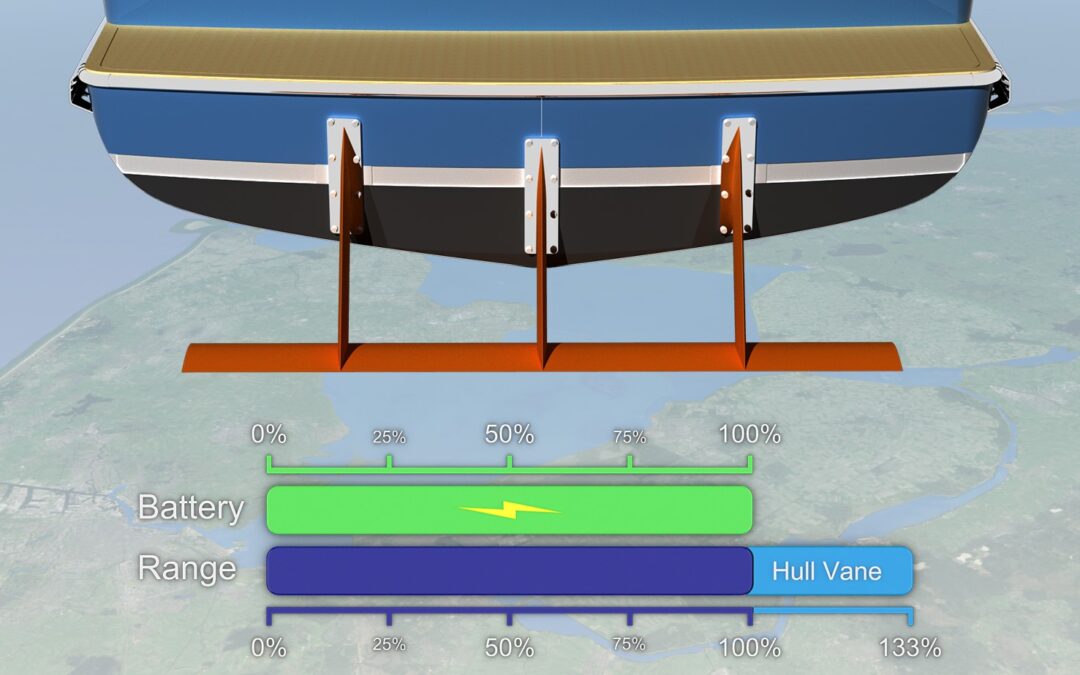We believe in a future where electrically powered motor yachts will play an important role. Hull Vane® will facilitate the energy transition in the maritime sector.
Just like aerodynamics are very important to the range of electric cars, the same applies – and even to a greater extent – for the hydrodynamics of battery-powered ships. To extract the maximum range out of your battery bank, your ship should glide as efficiently through the water as possible. A Dutch maritime innovation helps with this.
Hull Vane® is a submerged wing which has been developed to reduce the resistance of displacement ships. It does that by converting energy of the stern wave into forward thrust. For a diesel-driven ship, this means fuel savings, a reduced stern wave, quieter sailing and a higher top speed. On an electrically-powered vessel, there are additional advantages. You can get a longer range out of the same battery bank, or one can cover the same distance faster. On new build boats, the required range can be achieved with less batteries, and therefore reduce build costs and ship weight.
There is a sailing example: two new plug-in hybrid patrol vessels of the Port of Antwerp can sail on battery power up to 20 km/h. With their Hull Vane®, they can sail 33% farther on e-power than without Hull Vane® at this speed.
This means that Hull Vane® is the ideal range-extender for electrically powered pleasure yachts. With a Hull Vane® on your vessel, you will spend less time at the charging station and more time on the water. Evidently you save energy as well, and electric power doesn’t come free of charge either.
